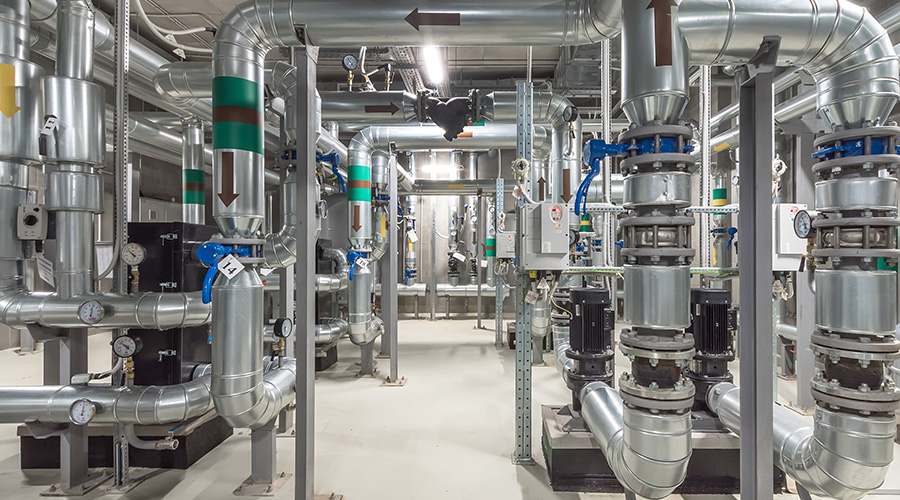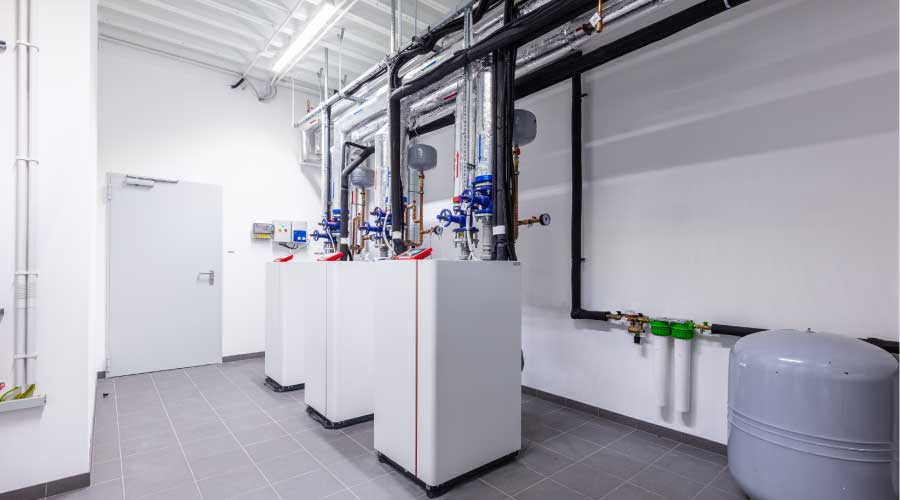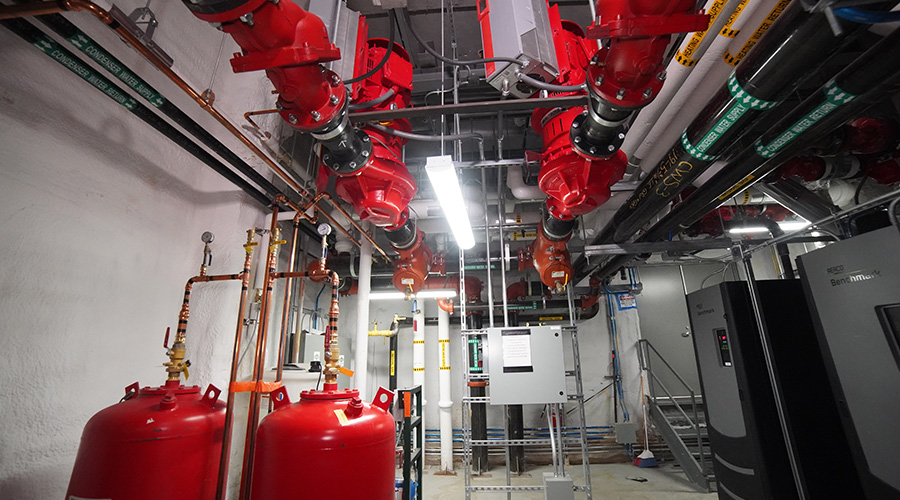 To upgrade boilers at the UCHealth Memorial Hospital power plant, crews removed roof panels and used a crane to lift out the old boilers and lower in new boilers, completing the task in three days.
To upgrade boilers at the UCHealth Memorial Hospital power plant, crews removed roof panels and used a crane to lift out the old boilers and lower in new boilers, completing the task in three days.Boilers: Overcoming Challenges, Learning Lessons
Managers who face the challenges of a project head on can be better prepared for future projects.
Among the challenges managers at UCHealth Memorial Hospital faced during the boiler replacement project were delays in the project’s early stages and the impact they had on later stages. The delays resulted from site conditions, and early phases exceeded budget, Wolfe says. So the team had to conduct several value-engineering sessions to keep the overall project on track and within budget.
“We were able to do that value engineering on the later phases to make sure we stayed within the overall budget,” Wolfe says. “We had to have some tough conversations up front when they said, ‘How could it cost three times as much to install a boiler as it was to purchase the boiler?’ Well, buying the boiler is the easy part.”
The value-engineering process meant the final project did not include some desired functionality.
“We had planned to provide a redundancy loop on the steam header so you could take portions of the header offline to work on a valve and still maintain fill operations,” Wolfe says. “It’s very expensive to provide a 12-inch high-pressure steam loop on the header. We ended up eliminating that. If we really wanted it, we’d have to fund it later.”
Major upgrades and replacements tend to present a host of challenges for the managers involved, but they also offer lessons managers can use to streamline future projects. Managers with UCHealth Memorial Hospital were able to take several lessons from the boiler replacement.
One lesson involves giving realistic consideration to the amount of time to allot to key steps in the process. For example, pre-work — including site preparation, pre-piping, and power infrastructure work — takes longer than the actual replacement, so adjust expectations accordingly.
“Make sure you build adequate time into your construction plans, and set expectations of senior leadership for realistic timing,” Wolfe says. “The same thing with budgets. Work with construction team for realistic budgets for all phases of the project so that earlier phases don’t overrun budgets and constrain final completion phases.”
Post-installation steps also require realistic consideration.
“Commissioning and startup of boilers this size takes longer and more money than you would think,” Wolfe says. “Get some estimates, and include those in your plans up front.”
Despite the challenges, Wolfe says the results of the upgrade have been positive.
“The power plant staff is very happy with the new boilers,” he says. “They’re more efficient, have greater capacity, are easier to maintain and are more reliable. Training with start-up and commissioning has helped cover the learning curve, and made (the transition) relatively seamless.”
Related Topics:














